How Can Lords&ladies Be Controlled In My Garden?
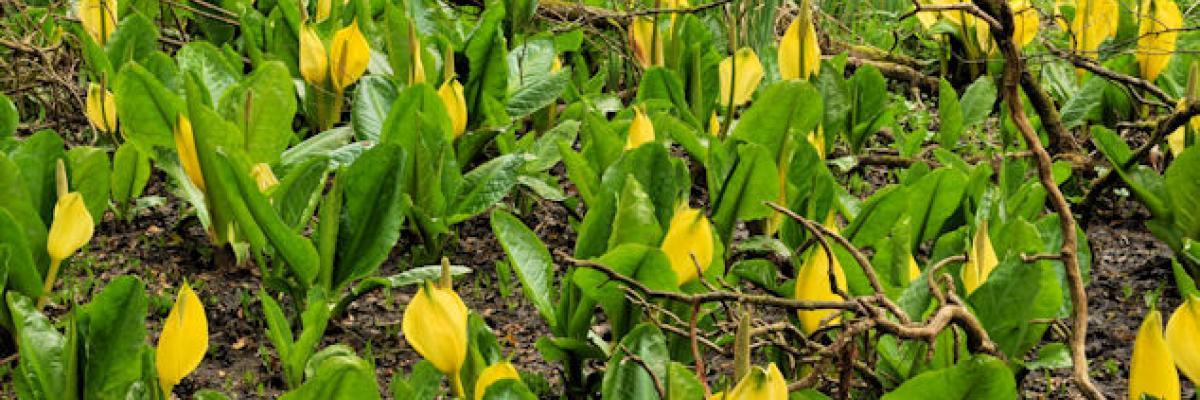
American Skunk Cabbage
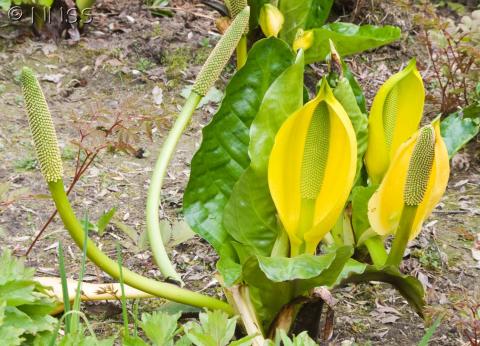
Meet the plant
American skunk cabbage (Lysichiton americanus) has huge leathery leaves between 40cm – 1.5m, and bright yellow 'flowers' up to 45cm, which resemble those of Lords and Ladies. The yellow 'flowers' emerge first around April time, followed by the leaves. The centre spike - the spadix - is covered in the tiny flowers which will bear seed. These seeds disperse via waterways but probably also by birds and animals.
It is found on pond margins, stream sides, bogs and wet woodlands.
It was widely planted as an ornamental plant besides ponds and in bog gardens and was still on sale as recently as 2009, it gradually escaped from gardens and into the wild.
Download the American skunk cabbage ID guide
Read more about American skunk cabbage
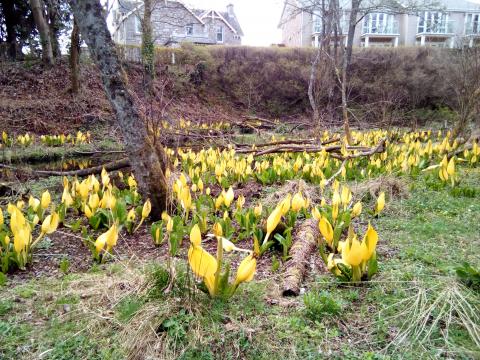
Impacts
The large leaves and dense stands of the plant lead to it out-competing smaller plants due to its shading effect and can cause extensive damage locally to native flora including vascular plants and mosses. It can grow in shade or full-light and in a range of different soil conditions and thrives in disturbed environments.
Given the popularity of this plant in gardens and its continued introduction into the wild, the problems are likely to increase. Although initial invasions will expand slowly, once this plant takes hold it can spread rapidly and become a serious problem.
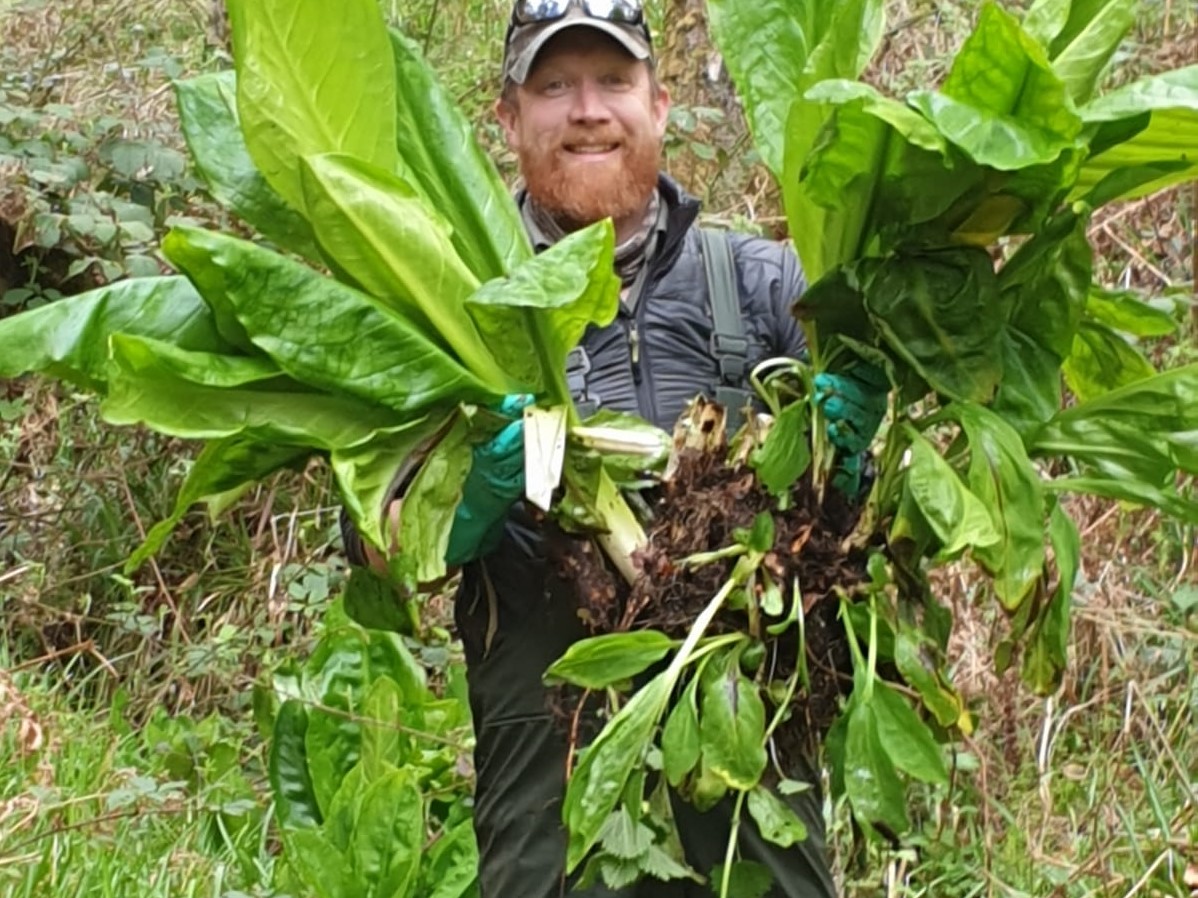
Management of American skunk cabbage
American skunk cabbage has been found at various locations throughout the river catchments we are working on. When we find this plant we trace it back to the source - often an ornamental pond in a garden - and start there. Ideally the source would be removed and we work down-stream from there to remove plants. Usually we find skunk cabbage on smaller tributaries and ditches that feed into the main rivers so it's important to remove plants before they infect the rivers.
Skunk cabbage spreads from both its underground rhizome roots and from seed production. A large seed bank can build up in the soil and can remain viable for around 8-9 years, so control work is a lengthy and ongoing process. However the plant is slow growing and only plants of three years or older produce flowers and seeds.
American Skunk cabbage control methods
Pesticide application
Chemical control is the recommended option for treating skunk cabbage, especially for dense stands.
However as it usually grows in water only suitably qualified people can undertake this. We've been enabling volunteers to gain their pesticide application qualifications with the additional water module to enable this work to be done safely.
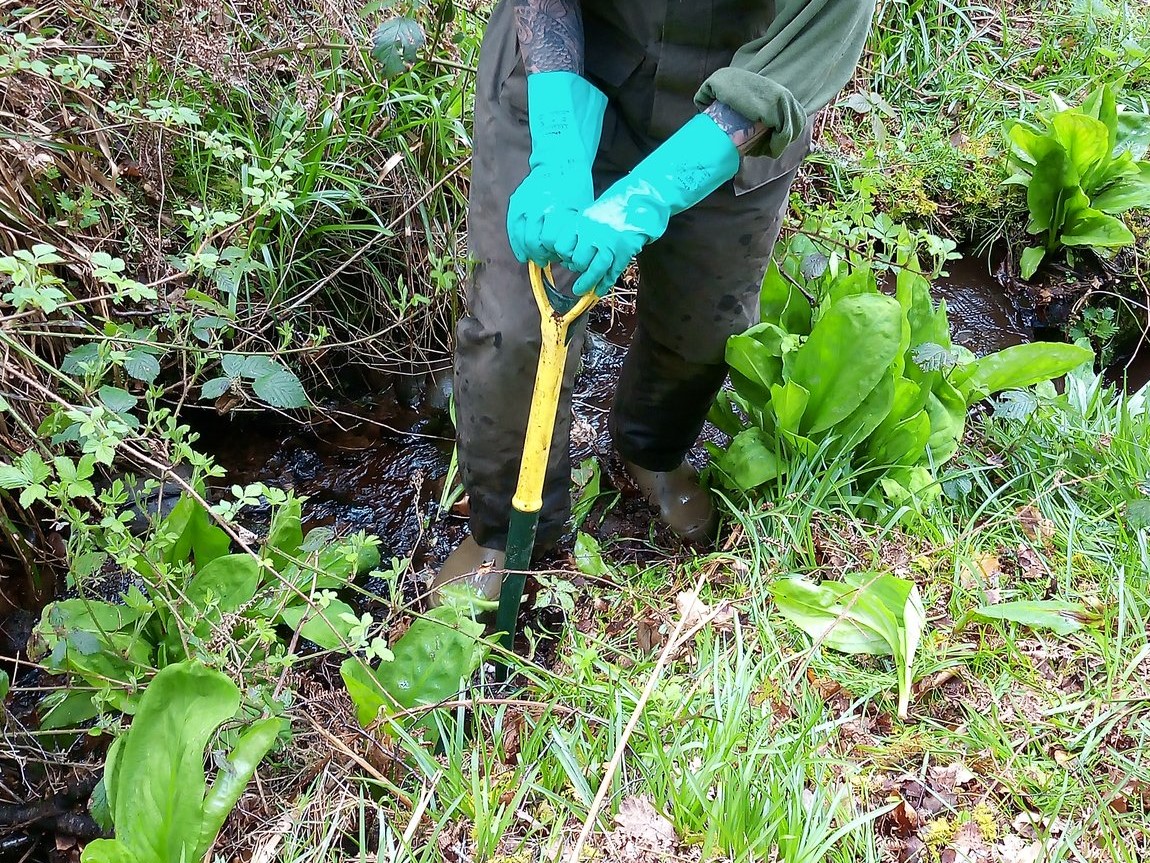
Digging
The plant can be dug out by hand, but this must include the main rhizomes from underground, and as it is thought that it is capable of establishing new plants from rhizome fragments. Care is needed to collect all plant matter if digging it up and plant material must be destroyed through burning, drying out (away from watercourses) or secure composting.
Digging can be a difficult task, due to the fact you are normally ankle deep in water and/or mud!
Cutting
The risk of spread of American skunk cabbage can be reduced in the short term by cutting the flower spike (the spadix) before it sets seed. It usually flowers in spring before leaves appear.
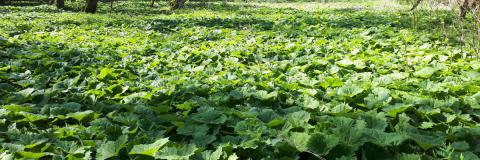
White Butterbur
Read more about White butterbur, how to identify it, what impacts it is having and how we are controlling it
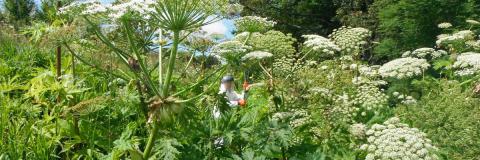
Giant Hogweed
Find out more about the hazardous Giant hogweed, why it is invasive and how to control it.
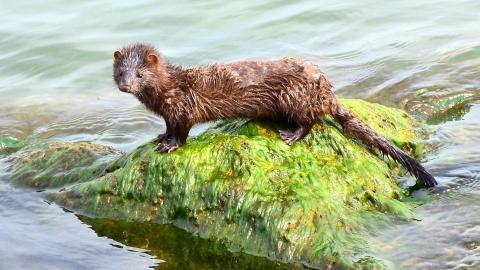
American Mink
Find out more about the American mink, how to identify it, what impacts it is having and previous mink control projects.
How Can Lords&ladies Be Controlled In My Garden?
Source: https://www.invasivespecies.scot/american-skunk-cabbage
Posted by: petersonagaisaink1965.blogspot.com

0 Response to "How Can Lords&ladies Be Controlled In My Garden?"
Post a Comment